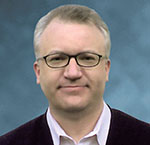Bill Siwicki
Four experts in healthcare cloud computing offer CIOs and other health IT workers who are starting – or maintaining – cloud migrations some well-rounded advice.
In one initiative, the health system tracked hourly rounding compliance by nursing staff. In just over a year, the health system's hourly compliance rate improved by 78.9 percent.
During the first year of tele-ICU, the technology helped save 125 lives, reduce ICU length of stay by 34 percent, reduce the sepsis mortality rate, and more.
After using the system for its 2017 reporting, Grandview achieved a MIPS score of 96.27 – earning 81.27 points in the Quality Performance category and 15 points in the Improvement Activities category.
Four experts in analytics offer key suggestions for starting with the technology at a provider organization. Current analytics users also can learn from these tips.
At Keystone Human Services, the new system offers a much more detailed picture, giving staff better insights into needs, goals and support requirements.
At the hospital's inflammatory bowel disease center, providers can now deliver better care to patients with delicate conditions.
With the RTLS hardware and software system in place, the medical group also has seen a 50 percent increase in face-to-face time with care teams and a 60 percent reduction in the number of steps taken by medical assistants daily.
Three experts offer comprehensive advice and tips for healthcare CIOs starting a clinical decision support journey.
A participant cohort assessment add-on allows staff to harness the power of data within the EHR, homing in on a more focused count of potential participants who could meet study criteria.
